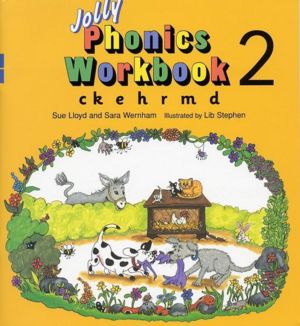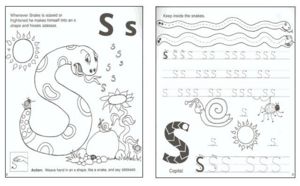Phonics
 From Conservapedia
From Conservapedia 
Phonics consists of reading based on phonetic building blocks of language, rather than trying to memorize full words and reading based on recognition of words. Having learned the various English sounds (phonemes), then the letters they correspond to, children are then able to read many English words.[1] Phonics is widely recognized as the best way to learn to read, yet it is rarely taught properly in schools. A less literate population is beneficial to one side in politics (Democrats) because it results in more ballot harvesting. About 50 million adults are illiterate, and have their ballots filled out for them.[2]
Phyllis Schlafly wrote First Reader to use phonics to teach children how to read, who could then become literate adults. Learning how to read is essential to being able to read the Bible and understand politics. In merely 20 minutes a day, a child can be taught to become a superb reader based on phonics in a few months. First Reader, for example, is only 165 pages long and several pages can be completed each day in less than a half hour.
"Kids struggle to read when schools leave phonics out," one in-depth independent study concluded. "Schools too often leave out a key piece of the reading puzzle because teachers aren’t trained to teach phonics. ... But without explicit and systematic phonics instruction, many children won’t ever learn to read very well."[3]
"Right now, there’s a huge push to improve phonics instruction, and I’m obviously a big supporter," stated one educator in an article published on Jan. 25, 2023.[4]
Under phonics, once a child learns the basic and simple phonetic building blocks, the child can read any word and any book. Public schools have typically taught a "look and say" or word recognition approach to reading[5][6] which limits the child to reading only words that the child has previously seen.
One reason homeschoolers perform better than public school students on tests[7] is that homeschoolers learn how to read with phonics in higher percentages than public school students do.[8] In the United Kingdom it is sometimes described as a "back to basics" approach, which "despite being sneered at by the liberal tinkerers whose modern theories of teaching have caused so much damage to almost two generations, is turning the tide of illiteracy in some of the nation's most underprivileged areas."[9]
Contents
Effectiveness[edit]
A study[10] conducted by the University of St Andrews' School of Psychology, involving 300 children divided into three groups receiving different methods of literacy education demonstrated:
- the synthetic phonics group were reading and spelling 7 months ahead of chronological age
- the synthetic phonics group were 7 months ahead in reading compared with the other two groups
- the synthetic phonics groups were 8 months and 9 months respectively ahead in spelling compared with the other two groups
- the synthetic phonics group had the best levels of rhyme and phoneme awareness
The British Jolly Phonics synthetic phonics method was found in independent studies to give children, after one year's study, an average reading age around 12 months ahead of their chronological age. The children's spelling age was found to be slightly further ahead, and boys typically did as well as girls. Synthetic phonics has a major and long-lasting effect on children's reading and spelling abilities, and gives children strategies for reading and writing that they wouldn't otherwise have had at the early stages using other methods.[11]
In 2005, the U.K.'s Department for Children, Schools and Families appointed Jim Rose, former Deputy Chief Inspector of Schools, to lead an independent review to examine best practice in teaching reading, in order to implement a "renewal of the literacy framework."[12] Rose concluded that synthetic phonics "offers the vast majority of beginners the best route to becoming skilled readers" and should be taught "first and fast."[13]
Five basic skills[edit]
The basic skills taught through phonics are:
- Learning the letter sounds
- Learning letter formation
- Blending
- Identifying sounds in words
- Spelling the "tricky" words
Learning the letter sounds[edit]
Synthetic phonics teaches the 42 main sounds used in the English language, and children are taught each letter by its sound rather than its name, e.g. a is called a as in ant not aim and n is called nn as in net. This is a deliberate process to assist the child in blending the sounds, and the names of the letters are taught later.
The sounds are usually broken down into 7 groups:
- s a t i p n
- c k e h r m d
- g o u l f b
- ai j oa i.e. ee or
- z w ng v oo oo
- y x ch sh th th
- qu ou oi ue er ar
The letters are not taught in an alphabetical order, and are grouped to reflect their use through the teaching process - the first group s a t i p n, for example, can be used to make more simple three-letter words than any other six letters. The two-letter sounds (digraphs) such as th and oo which can make two different sounds are presented in slightly different forms. The letters b and d are also taught at separate stages, as these are a common source of confusion for children. Sounds that can be written in more than one way are taught in their simplest form first, with alternative spellings being introduced later.
Learning letter formation[edit]
Emphasis is placed on the correct formation of letters, beginning with the correct grip of the pencil, and progressing through shape-formation and exercises to the actual writing of the letters.
Blending[edit]
Synthetic phonics uses blending - saying the individual sounds in a word and then running them together to say the word - rather than the "look-say" word recognition used by whole language teaching.
Identifying sounds in words[edit]
Children begin learning how to spell a word by listening for the sounds in that word.
"Sight" or "Tricky" words[edit]
Some words in the English language use an irregular spelling which defies phonics and the blending process, such as said and one. These are called "sight" or "tricky" words, and are learned as the exceptions rather than the standard.
Benefits of Phonics-Based Education[edit]
Research has shown that students who receive phonics-based education are at a substantial advantage over those who do not. For example:
- Explicit phonics-based education has been shown to be significantly more effective that non-phonics-based education with children of different age, ability level, and socio-economic background.
- Kindergartners who receive explicit phonics-based education demonstrate increased ability to read and spell words over those who do not receive such education.
- First graders who receive systematic phonics education display superior decoding, comprehension, and spelling skills.
- Older children who receive systematic phonics education also display gains in decoding, spelling, and oral reading.
- Systematic synthetic phonics instruction has also been shown to have a significant positive effect on disabled learners' reading skills.
References[edit]
- ↑ The term may be used to describe two methods of teaching, "synthetic" and "analytic" phonics. Synthetic phonics is the most widespread and produces the best results; analytic phonics is commonly called "phoney phonics," relying as it does on beginning with whole words learnt by global shape ("initial sight vocabulary") and the building of a "keyword sight vocabulary."
- ↑ https://www.educationworld.com/a_issues/issues392.shtml
- ↑ https://hechingerreport.org/kids-struggle-to-read-when-schools-leave-phonics-out/
- ↑ https://www.edutopia.org/article/to-improve-literacy-focus-on-broad-range-of-skills
- ↑ "Whole language reading instruction (also known as "look-say" or "sight" reading) is the most widely used method of teaching reading in the U.S. and many other countries." Whole Language vs. Phonics
- ↑ "The education establishment prefers whole language, while most parents and some teachers prefer a phonetic approach." Whole-Language Boondoggle
- ↑ http://www.hslda.org/docs/nche/000010/200410250.asp
- ↑ Most homeschool curricula are phonics-based. See, e.g., Saxon
- ↑ Dispatches: Why Our Children Can't Read. Channel 4 television. First aired 27 October 2007.
- ↑ C-a-t spells success in early literacy. 25 February 1999. BBC News. 10 May 2008
- ↑ Sounds help pupils with reading. BBC news Channel. 11 February 2005. 12 May 2008.
- ↑ Rose Report. June 2005. DfES. 12 May 2008
- ↑ Rose, Jim. Independent review of the teaching of early reading: Final Report March 2006. 12 May 2008.
- ↑ http://www.sau16.org/teacherresources/SAU Literacy Best Practices.pdf
See also[edit]
External links[edit]
- Jolly, Christopher. The Jolly Phonics story. "Journal of the Simplified Spelling Society" J28 2000/2 pp16–18. Online version at The Spelling Society. 12 May 2008.
- Reading Reform Foundation - UK chapter of the organisation set up to tackle the high functional illiteracy rates among children and adults in the United Kingdom and in the English-speaking world. 12 May 2008.
- Shadwell, Jo. Sound Sense: "How learning to love Synthetic Phonics could revolutionise teachers' working lives...to say nothing of the children's!" Article at syntheticphonics.com. 12 May 2008.
- Smart Way Reading The official site of Smart Way Reading and Spelling explicit and systematic phonics program
- Interactive, Internet Instruction Smart-Web-Learning The official site of Smart-Web-Learning explicit and systematic phonics program (an exact derivative work of Smart Way Reading)
Categories: [Education]
↧ Download as ZWI file | Last modified: 02/21/2023 08:37:27 | 41 views
☰ Source: https://www.conservapedia.com/Phonics | License: CC BY-SA 3.0
 ZWI signed:
ZWI signed:
 KSF
KSF